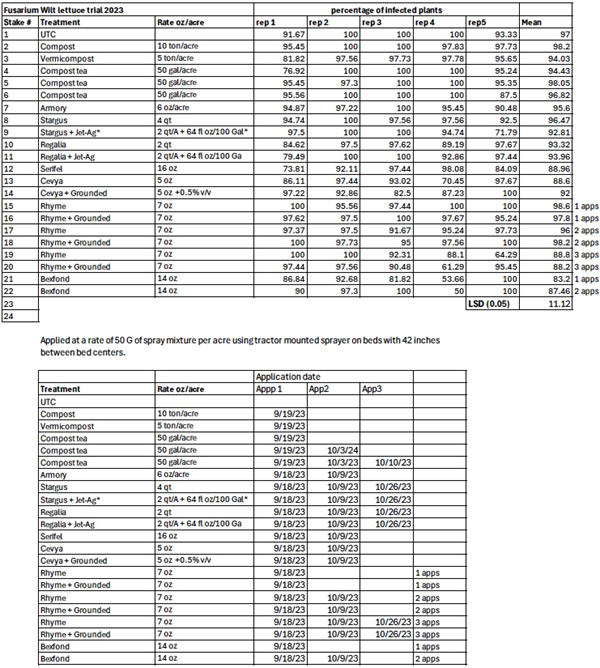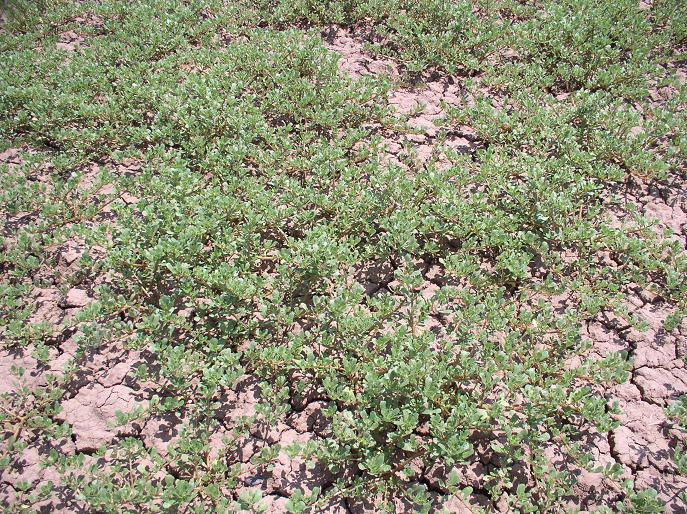Jun 30, 2010
Purslane 2010
Common Purslane (Portulaca oleracea) is at the same time one of the most troublesome weeds in vegetable crops and one of the most nutritious leafy vegetables. It is very widespread in the desert southwest but is also on the list of Arizona Prohibited Noxious Weeds
which means that it is prohibited from entry into the state. Common Purslane is eaten in Mexico (Verdolaga), Europe and Asia and contains more omega 3 fatty acids than any other leafy vegetable. It also contains vitamins A, B and C and dietary minerals.
Common Purslane is often lumped together with Horse Purslane although the two are in different families. Common Purslane is in the Portulaca family while Horse Purslane is in the Trianthema or Carpetweed family.
In lettuce, Purslane is often controlled during ground preparation where it is geminated and killed with chemicals or tillage. Timing is important with both of these techniques. Purslane grows rapidly and one plant can produce thousands of seeds. These seeds can germinate in 12 hours after receiving moisture in August and September. They can also germinate in January and February but will take 3-7 days to germinate at that time. The stems are very succulent and unless they are completely killed and desiccated they can reroot at the nodes. Tillage that does not completely desiccate the plants can spread rather than eliminate this weed.
Herbicides used to kill this weed during ground preparation include both contact (Gramoxone, Aim and ET) and systemic (glyphosate) herbicides. Results can range from 0 to 100% depending upon weed size, rate and adjuvant used at the time of application. The contact herbicides can produce almost 100% control when the Purslane is less than 2 inches in diameter and less than 50% control when larger than this. This is especially the case with Aim where control can drop from excellent to poor in 3 - 5 days.
Purselane has a thick waxy cuticle and an adjuvant is needed with all of these herbicides to help penetrate into the leaves and stems. A non-ionic surfactant will help the herbicide spread and stick while crop oil concentrates help break up this waxy layer. Time of day when applied can also be important. During the morning hours leaf pores are open, new growth is occurring and the plant is more sensitive to herbicides than during the middle of the day when the plant is conserving water and energy. There is a wide range of rates used with Aim, Gramoxone and glyphosate to control Purslane during ground preparation. Normal rates vary from 0.5 to 2.0 oz. with Aim, 1.5 to 4.0 pt. with Gramoxone and 1.0 pt. to 2.0 qts. with glyphosate when used alone or in combination. All of these herbicides only work on emerged weeds and people often wait until they are sure most of the weeds have emerged to avoid making multiple applications. As a result, there can be a wide range of weed sizes at the time of application. Rates should target the largest weeds. It is less costly to choose a higher initial rate than to have to make additional applications.
To contact Marco Pena go to:
marcop@ag.arizona.edu








